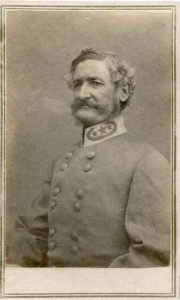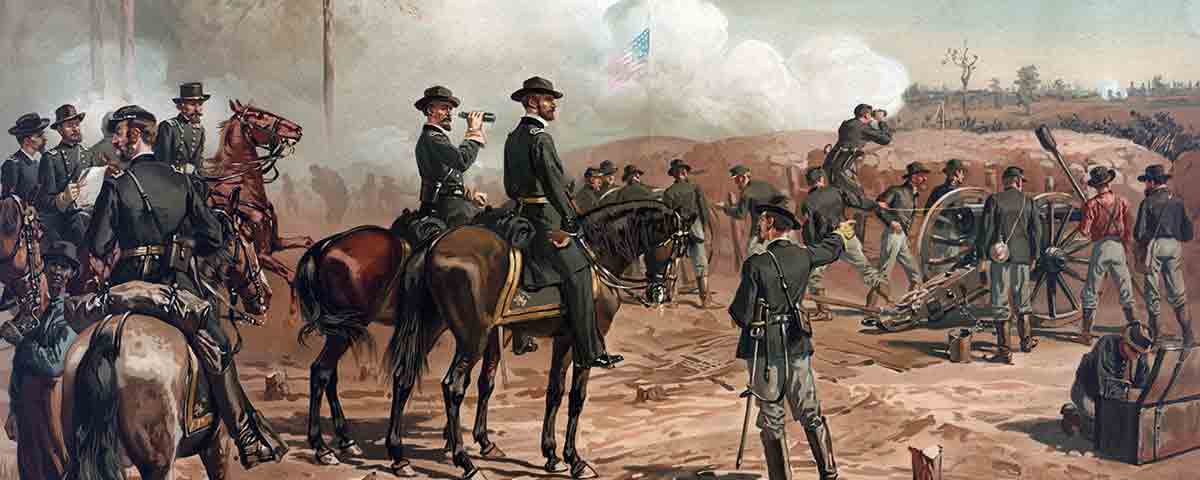The importance, or lack thereof, of the various western theaters of war
The West has achieved new prominence in recent literature on the Civil War and Reconstruction. Some authors believe that the war, post-Appomattox events, and the West must be brought together to expand a traditional narrative dominated by the axis of North versus South, slaveholding versus non-slaveholding, and the United States versus the Confederacy. What is needed, they believe, is a more comprehensive analytical framing that stretches from the Atlantic to the Pacific, includes Native Americans as well as black and white residents, encompasses borderlands with Canada and Mexico, and erases the usual chronological limits.
Some definitions are necessary. “The West” as understood during the mid-19th century could be expansive. Abraham Lincoln and Ulysses S. Grant were known as “western” men, and during Washington’s Grand Review in May 1865 many observers drew distinctions between the western soldiers in Sherman’s armies, most of whom hailed from what we call the Midwest, and eastern men in the Army of the Potomac. Similarly, the Iron Brigade, with regiments from Indiana, Michigan, and Wisconsin, proudly embraced its reputation as the only all-Western brigade in the Army of the Potomac. The Western Theater extended from the Appalachian Mountains to the Mississippi River and from the Ohio River to the Gulf of Mexico. The Trans-Mississippi Theater, a subset of the larger West like the Western Theater, took in everything from the Mississippi River to the Pacific and from Canada to Mexico.

What most modern Americans imagine as “the West” would include the Civil War–era territories beyond the 100th Meridian—everything from eastern Kansas, Nebraska, and the Dakotas to the Pacific Coast. Thanks in significant measure to Hollywood’s influence, this is the West associated in popular memory with gold rushes in California and Colorado, the final conflicts between Native Americans and the U.S. Army, the building of transcontinental railroads, outlaws and lawmen in frontier towns, sodbusters and cattlemen, and the massive migration of white emigrants from eastern to western areas.
How should these various “Wests” fit into the history of the Civil War era? No one can dispute the West’s centrality to secession and the coming of conflict in 1860-61. Debates about whether to permit slavery in federal territories provoked crises from the Missouri Controversy of 1820 through the Wilmot Proviso of 1846, the Compromise of 1850, the Kansas–Nebraska explosion of the mid-1850s, and the Democratic Party’s meltdown in Charleston, S.C., and Baltimore in 1861. Indeed, without friction relating to slavery in the Western territories, it is difficult to imagine a secession movement that went beyond rhetorical bluster and posturing.
The war’s Western Theater must be an essential part of any discussion of the war. Fighting in that region began in Kentucky, ended in North Carolina, and featured storied military campaigns such as Shiloh and Atlanta. That theater produced the commanders who won Union victory, re-elected the Republicans in 1864, and thereby kept emancipation on the table, and headed the postwar army well into the 1880s. Whether it was as important as the Eastern Theater—in terms of Confederate or United States morale or garnering the attention in European capitals—is another question.
The Trans-Mississippi Theater, which included noteworthy military and political action primarily in Missouri, Arkansas, and Louisiana, lagged far behind the Western and Eastern theaters in significance. Neither the United States nor the Confederacy made it a priority when allocating material, troops, or the best generals. And events on the margins of the theater, such as Henry Hopkins Sibley’s quixotic foray into New Mexico in 1862, scarcely rise to the level of inconsequential.
[quote style=”boxed” float=”left”]The 1864 slaughter of Cheyenne and Arapaho at Sand Creek was not really a Civil War event[/quote]
What about the trans-100th-Meridian West? It remained peripheral to the fundamental issues of both the Civil War and Reconstruction. Two great goals dominated the war years: The vast majority of U.S. citizens and soldiers sought to restore the Union, while those in the Confederacy sought to establish a new slaveholding republic. Although people on both sides sometimes thought about this West (a number of Confederates hoped to find access to the Pacific in Baja California, for example), their attention almost always displayed a more eastward interest.
The Republican Party’s agenda did feature legislation that affected later western development, most obviously the Homestead Act, Pacific Railway Act, and Morrill Act, all passed in 1862. But each of these had antebellum roots, and both their wartime passage and postwar impact can be considered part of a developmental arc that likely would have played out in some fashion absent the war.
Similarly, as I argued recently in the April 2017 column, the relocation of the Dakota Sioux from Minnesota after 1862, forced resettlement of the Navajo by U.S. forces under Kit Carson in 1864, and slaughter of approximately 150 Cheyenne and Arapaho at Sand Creek in 1864 were not really Civil War events—though they occurred during the war. Ample testimony underscores the degree to which people at the time separated the war over secession from clashes with Indians.
As for Reconstruction, it had a very specific meaning in the 19th century that had almost nothing to do with the West. The key Reconstruction documents, among them Lincoln’s proclamation of amnesty and Reconstruction, the Wade-Davis Bill, the 14th Amendment, and the Reconstruction Acts of 1867-68, address the problem of bringing former Confederate states back into the Union and dealing with the long-term consequences of emancipation. Negotiations and treaties between the U.S. government and the “Five Civilized Tribes” in Oklahoma also could be considered part of Reconstruction, which ended, at the latest, with the removal of token Federal forces that remained in the former Confederacy in 1876. But Reconstruction should not be conflated with the larger history of the United States between Appomattox and 1876. In the West, that larger history included, among other things, Indian wars and growth of the reservation system, accelerating white settlement, and construction of the transcontinental railroads.
It is always interesting to contemplate what an accurate survey of opinion in the past might reveal. I suspect Americans polled in 1861-65 or in 1876 would not have placed the trans-100th-Meridian West anywhere near the center of either the war or Reconstruction.





